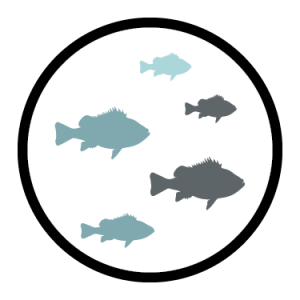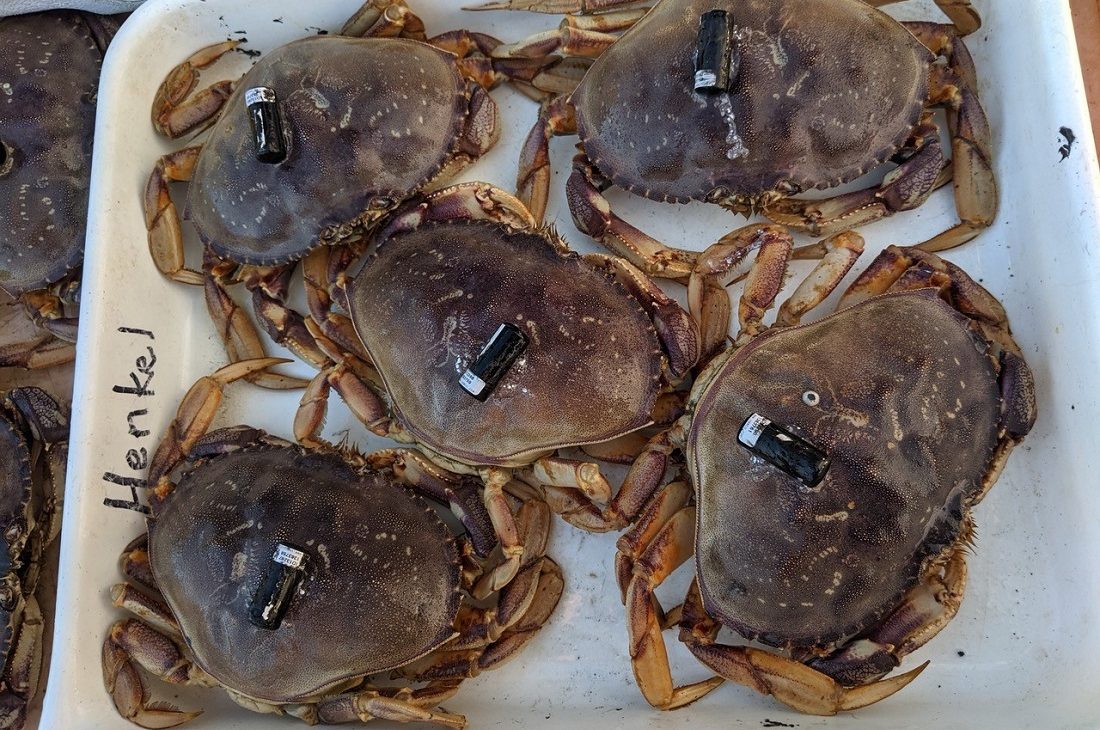Photo: Tags are glued to the backs of Dungeness crab from the Redfish Rocks Marine Reserve to track their movements in response to noise produced from an NSF geological seismic survey being conducted this summer.
May has been a busy month – balancing data analysis for the ODFW Marine Reserves Synthesis Report with preparations for fieldwork. Here’s what’s been happening in the field …
OCEANOGRAPHIC MONITORING

Cape Falcon: We built oceanographic moorings to collect data on temperature, salinity, and oxygen to track changing ocean conditions. The moorings were deployed in the reserve and in the Cape Meares comparison area by our local collaborator, the F/V Lady Lee, out of Garibaldi.
Cascade Head: We built an oceanographic mooring and are scheduled to deploy it in early June.
Cape Perpetua: The OSU-PISCO oceanographic mooring was serviced this month which included downloading the data, cleaning the sensors, and refreshing the batteries. Data from this year show that this is the earliest spring transition/upwelling season on record. OSU-PISCO researchers are predicting we may experience low oxygen levels this summer off the Oregon coast. Check-out this KGW News article and interview with Dr. Francis Chan and hear how commercial crabbers are collaborating to collect additional dissolved oxygen data off Oregon.
Redfish Rocks: As part of the new collaborative research project between OSU and ODFW, to study fish and crab responses to noise generated from an NSF geological seismic survey, our team added oceanographic sensors to the moorings that have been set up with acoustic receivers within the reserve.
JUVENILE FISH SURVEYS AND OCEANOGRAPHIC MONITORING

Otter Rock: Our research collaborators at OSU and the Oregon Coast Aquarium deployed SMURF moorings, for juvenile fish recruitment surveys, in the reserve and in the Cape Foulweather comparison area. We’ve also attached oceanographic sensors to the moorings to track temperature, salinity, and oxygen.
